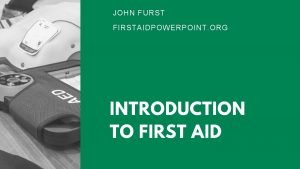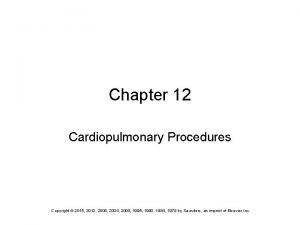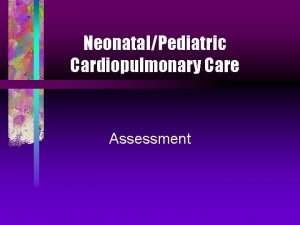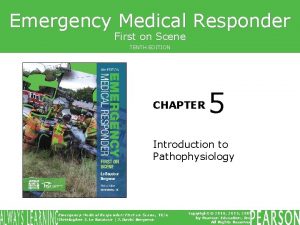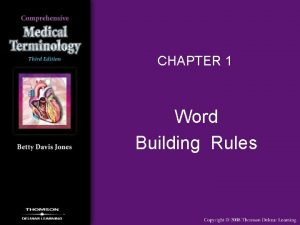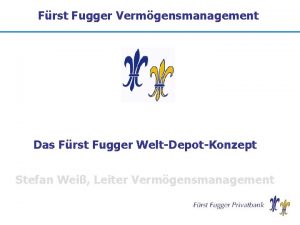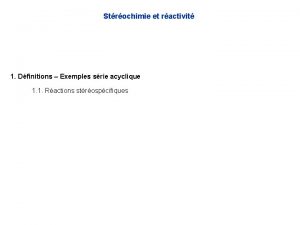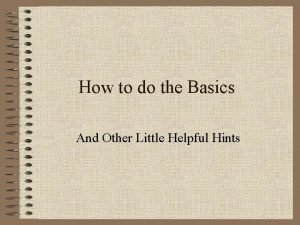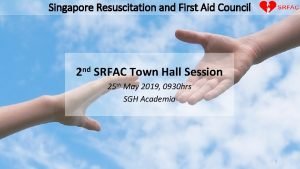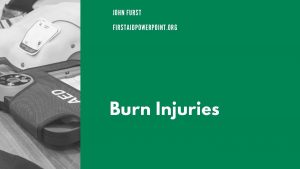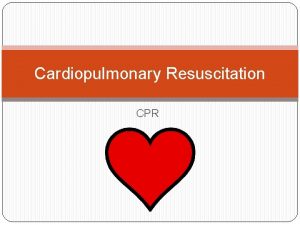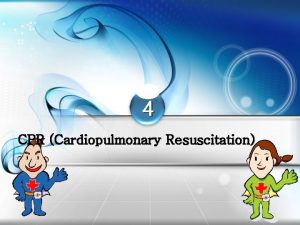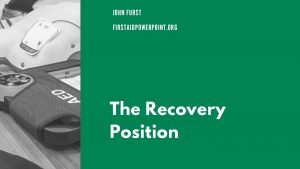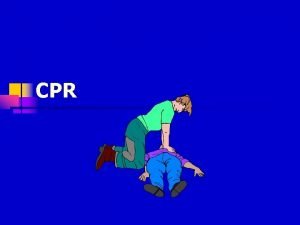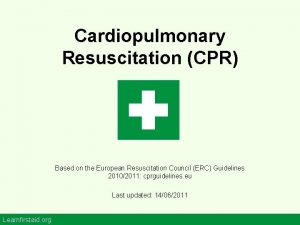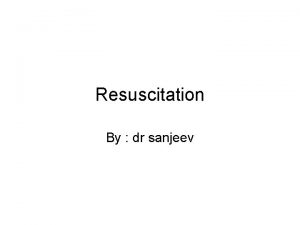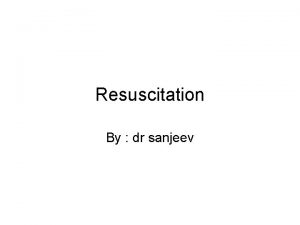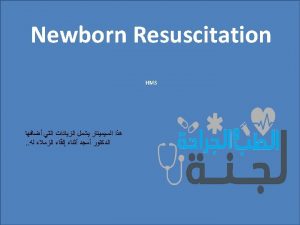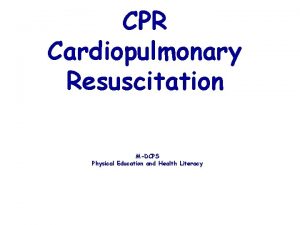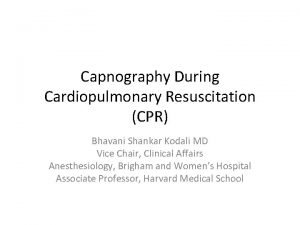JOHN FURST FIRSTAIDPOWERPOINT ORG Cardiopulmonary Resuscitation CPR JOHN
















- Slides: 16

JOHN FURST FIRSTAIDPOWERPOINT. ORG Cardiopulmonary Resuscitation (CPR)

JOHN FURST FIRSTAIDPOWERPOINT. ORG From minor cuts and burns, to heart attacks and strokes, this handy, take-anywhere guide gives you the knowledge and advice you need to recognize and respond to any medical emergency. Be prepared for any medical emergency and handle it safely and efficiently with The Complete First Aid Pocket Guide. Quickly identify signs and symptoms of a wide range of medical conditions and learn how to recognize the difference between a minor injury or illness, and those that are more serious with this essential handbook.

What is CPR? Cardiopulmonary Resuscitation (CPR) is a first aid technique to help people who suffer a “cardiac arrest” (their heart stops beating). It involves doing chest compressions and rescue breaths to keep the patient alive until a defibrillator arrives. A defibrillator is an electrical device which can be used to help restart someone’s heart. CPR on its own is unlikely to restart someone’s heart, however it will increase the chance of a defibrillator being successful. FIRSTAIDPOWERPOINT. ORG

Patient assessment If you find someone collapsed, you can use DR ABC to help you remember what actions to take. ● ● ● Danger Response Airway Breathing Call / Commence CPR FIRSTAIDPOWERPOINT. ORG

Danger Ensure there are no dangers to yourself, other bystanders or the patient Ask yourself - why has the patient collapsed? Are there any hazards? Am I at risk? Dangers could include moving vehicles, electricity, water, other people or smoke/fire Only enter a situation if it is safe to do so. Remember, you are the most important person. FIRSTAIDPOWERPOINT. ORG

Response Try and wake the victim up - are they responding to you? Kneel by their head, shout loudly in both ears and tap them on the shoulders. If you do not get aa response, the patient is unconscious. This is an emergency. Try and attract attention to yourself/the patient by shouting for help. However, do not leave the patient. FIRSTAIDPOWERPOINT. ORG

Airway The airway is the tube which takes air from the mouth/nose to the lungs. When a patient is unconscious, their tongue can fall backwards and block their airway. This can cause an obstruction and the victim will quickly suffocate. To open an unconscious patient’s airway, place one hand on their forehead and tilt their head backwards. Then place two fingers on the bony part of their chin and lift it. This is known as the “head tilt, chin lift” maneuver. FIRSTAIDPOWERPOINT. ORG

Airway This action can save a life! FIRSTAIDPOWERPOINT. ORG

Breathing Keep your hands on the person’s head/chin. Place your cheek above their mouth and look at their chest. Look, listen and feel for normal, regular breathing for up to 10 seconds. Irregular shallow gasps is not normal breathing. This is a phenomenon known as ‘agonal breathing’ and should be ignored. Patients who have just suffered a cardiac arrest may display agonal breathing. FIRSTAIDPOWERPOINT. ORG

Call for Help If the victim is not breathing normally, immediately call for emergency medical help if this has not already been done. Ensure the call operator is informed the victim is not breathing. This is an essential link in the ‘chain’ of survival for improving cardiac arrest care. FIRSTAIDPOWERPOINT. ORG

Commence CPR After an ambulance has been called, you should immediately commence CPR. First, you should give 30 chest compressions Place your hands in the centre of the person’s chest, over the breastbone (sternum) Interlock your fingers Push down 30 times at a rate of 100 - 120 compressions / minute FIRSTAIDPOWERPOINT. ORG

CPR: Chest Compressions Ensure your elbows are locked and your shoulders positioned above the chest. Push down to a depth of 5 – 6 cm Ensure you release fully after each compression. Do not ‘lean’ on the victim’s chest. FIRSTAIDPOWERPOINT. ORG

CPR: Rescue Breaths If you have been trained in CPR and are willing to, give two rescue breaths after every thirty chest compressions. Tilt the patient’s head backwards, life their chin and then pinch their nose Make a seal over their mouth and breath in for approximately one second. Do not overinflate the patient’s chest – you are not blowing up a balloon! FIRSTAIDPOWERPOINT. ORG

CPR Continue the cycle of 30 chest compressions to 2 rescue breaths until help arrives. If there is more than one first aider, swap over doing chest compressions every two minutes. If a defibrillator arrives it should be used immediately. FIRSTAIDPOWERPOINT. ORG

Real life example FIRSTAIDPOWERPOINT. ORG

Real life example (2) FIRSTAIDPOWERPOINT. ORG
 17:7 providing first aid for heat exposure
17:7 providing first aid for heat exposure Resuscitation cpr
Resuscitation cpr Cpr definition medical
Cpr definition medical John furst first aid
John furst first aid Chapter 12 cardiopulmonary procedures
Chapter 12 cardiopulmonary procedures Cardiopulmonary
Cardiopulmonary Cardiopulmonary
Cardiopulmonary Megalocardia word breakdown
Megalocardia word breakdown Pulmonary circuit
Pulmonary circuit Dr richard furst
Dr richard furst Fürst
Fürst Balassi bálint gimnázium felvételi
Balassi bálint gimnázium felvételi Furst plattner
Furst plattner Fürst pückler eis
Fürst pückler eis Fürst uranov person
Fürst uranov person Difference between resuscitation and resurrection
Difference between resuscitation and resurrection Srfac
Srfac



